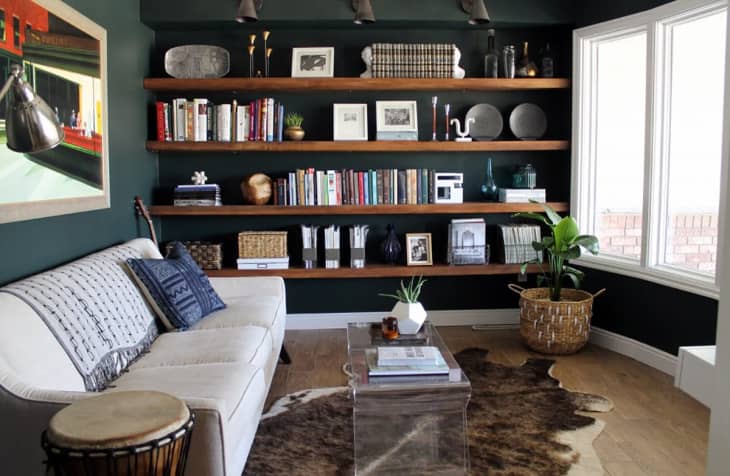There’s a Reason Why Tile That Looks Like Wood Is So Popular

Love the crisp, clean look of hardwood floors, but know it’s not practical for your space? Or maybe it’s simply out of budget. You could install it anyway (bad idea), you could have a pity party for yourself (no fun), or you could opt for a newly popular style of tile that’s popping up everywhere: porcelain or ceramic “wood” tiles.
Why? “People are always drawn to what’s new and next, especially when looking to add texture and warmth to a room,” says Bradley Odom, owner of Atlanta-based design firm Dixon Rye. “Porcelain tile tends to be cold and the provided look of wood sends a message of warmth.”
It’s more than that: A quick glance at these tiles, and you might not even notice the difference. Wood look floor tiles offer many of the same advantages of traditional hardwood floors. There are countless shades to choose from—like cherry, walnut, and white-washed—and each tile has convincing grain lines. You can even get tiles cut to different widths and lengths to mimic the varied look of traditional hardwood. “Today there are really great options in wood tiles,” says Odom. “They’ve really come a long way.”
Beyond the increasingly pleasing aesthetic, there are a few real advantages to ceramic or porcelain wood tiles that have contributed to the demand. “Wood tile is extremely durable in heavy traffic areas, easy to clean, and can provide a lot of look for little cost,” says Odom.
“I love wood tiles in laundry rooms, mud rooms, and kitchens,” says New York-based designer Mara Silber. These tiles are also ideal for basements, three-season porches, and bathrooms—any room that has to withstand moisture or heavy use. And since wood look floor tiles are easier to maintain than hardwood, they work especially well in rental properties or spaces frequented by kids and pets, too. “[Wood tiles] can withstand the heavy foot traffic without compromising design,” Silber says.
Wood look tiles are not without their disadvantages, though. When it comes to resale, we know classic hardwood won’t go out of style, while newer wood tile’s staying power is yet to be determined. Plus, it’s easier to refinish real hardwood to suit a new buyer’s taste. (If you are worried about this, talk to your real estate agent for their take on the local market). Ceramic and porcelain tiles are also firmer materials, and are less forgiving on your feet. In a room like the kitchen, this can take a toll on your body.
If you’re in the market for a ceramic or porcelain wood tile, look at the grain, coloring, and finish, says Silber. “Too much contrast, unnatural colors, and super shiny finishes will look like a cheap imitation.” Don’t think you’ll fool anyone into thinking you sprung for hardwood though, says Odom. Rather than trying to disguise a wood tile floor as hardwood, embrace the material as it is. Go for something like a white wood look tile, and lay it in a chevron or herringbone pattern. And don’t install it in a space where it transitions against real hardwood, says Silber. “It never looks right!”